
Saving the riding hall near Tachov cost 75 million
Source
Václav Prokš
Václav Prokš
Publisher
ČTK
02.02.2013 17:45
ČTK
02.02.2013 17:45
Czech Republic
Tachov
ATELIER SOUKUP OPL ŠVEHLA s.r.o.
Tachov - Approximately 75 million crowns have been spent so far on the twelve-year rescue of the monumental riding hall in Světce near Tachov, the second largest in Central Europe after the Spanish riding school in Vienna. About 40 percent of that was paid by the city. The 152-year-old building was declared a national cultural monument in 2010. At least 80 million crowns are still needed to complete the repairs and renovations. In recent years, however, only the city of Tachov has been providing funds, and the state no longer participates in the repairs, said Mayor Ladislav Macák (ČSSD).
"Now we are waiting to see what the EU funding will be in the new planning period after 2014, whether we will have a chance. We have had a complete project for three years," he stated.
This year, Tachov will allocate another two million crowns. "But that doesn't solve anything. We are slowly starting to repair what we recently fixed. For example, the roof and windows," he added. Last year, the city hall completed toilets for six million crowns, which the conservationists ordered to be built; the state did not contribute.
According to Macák, the rescue of the monument was initiated by former Minister of Culture Pavel Dostál (ČSSD). In recent years, however, the city hall has only managed to save it with its own funds and smaller contributions from the region for the preservation of the frescoes. "When we received the paper stating that it is a national cultural monument, there was a note saying that this does not entitle us to grants. Since then, we have received nothing," he said.
The object, which was considered for demolition, is completely structurally secured, but the interior renovations are missing. The extensive building is planned to include a stylized restaurant, exhibition spaces, a larger and smaller hall, a herbology museum, dressing rooms for artists, a club room, and an apartment for the caretaker. "When it will be done, I have no idea. The money is constantly dwindling and we don't have it," said Macák.
The building, which is currently used for concerts, weddings, and exhibitions, can accommodate 500 to 600 people. The riding hall is currently opened via a phone call to the infocenter, as it is still a construction site. The long-term goal of the city is to have it open daily and to create a permanent tour route in addition to the museum.
Citizens appreciate that the city hall has saved the monument. "In 2000, it was practically a ruin ready to collapse. At that time, the rescue passed by just one vote against demolition," stated Deputy Mayor Jiří Struček (ČSSD).
According to experts, the technically advanced building combines elements of industrial architecture and aristocratic nobility. It was built in the Neo-Romanesque style between 1858 and 1860 at the request of General Alfred Windischgrätz. In 1945, the state confiscated Windischgrätz’s property. Since then, it has served as an occasional warehouse, and later it was used by the border guard. In 1981, the Ministry of Culture removed it from the list of cultural monuments, but it was re-registered there under pressure from the city hall in 1991. Five years later, the army transferred it to the city for a symbolic price. The riding hall is 60 meters long, 52 meters wide, and 27 meters high; the hall measures 20 by 40 meters.
"Now we are waiting to see what the EU funding will be in the new planning period after 2014, whether we will have a chance. We have had a complete project for three years," he stated.
This year, Tachov will allocate another two million crowns. "But that doesn't solve anything. We are slowly starting to repair what we recently fixed. For example, the roof and windows," he added. Last year, the city hall completed toilets for six million crowns, which the conservationists ordered to be built; the state did not contribute.
According to Macák, the rescue of the monument was initiated by former Minister of Culture Pavel Dostál (ČSSD). In recent years, however, the city hall has only managed to save it with its own funds and smaller contributions from the region for the preservation of the frescoes. "When we received the paper stating that it is a national cultural monument, there was a note saying that this does not entitle us to grants. Since then, we have received nothing," he said.
The object, which was considered for demolition, is completely structurally secured, but the interior renovations are missing. The extensive building is planned to include a stylized restaurant, exhibition spaces, a larger and smaller hall, a herbology museum, dressing rooms for artists, a club room, and an apartment for the caretaker. "When it will be done, I have no idea. The money is constantly dwindling and we don't have it," said Macák.
The building, which is currently used for concerts, weddings, and exhibitions, can accommodate 500 to 600 people. The riding hall is currently opened via a phone call to the infocenter, as it is still a construction site. The long-term goal of the city is to have it open daily and to create a permanent tour route in addition to the museum.
Citizens appreciate that the city hall has saved the monument. "In 2000, it was practically a ruin ready to collapse. At that time, the rescue passed by just one vote against demolition," stated Deputy Mayor Jiří Struček (ČSSD).
According to experts, the technically advanced building combines elements of industrial architecture and aristocratic nobility. It was built in the Neo-Romanesque style between 1858 and 1860 at the request of General Alfred Windischgrätz. In 1945, the state confiscated Windischgrätz’s property. Since then, it has served as an occasional warehouse, and later it was used by the border guard. In 1981, the Ministry of Culture removed it from the list of cultural monuments, but it was re-registered there under pressure from the city hall in 1991. Five years later, the army transferred it to the city for a symbolic price. The riding hall is 60 meters long, 52 meters wide, and 27 meters high; the hall measures 20 by 40 meters.
The English translation is powered by AI tool. Switch to Czech to view the original text source.
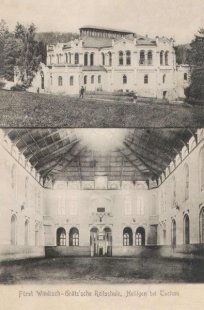
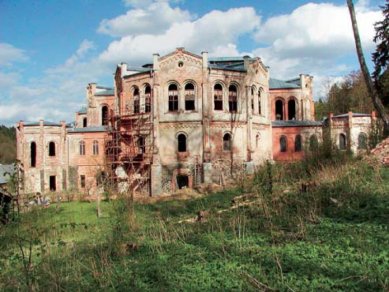
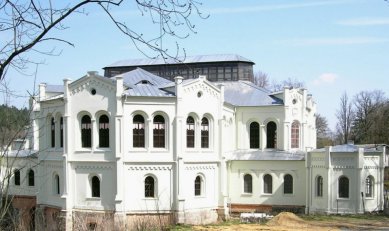
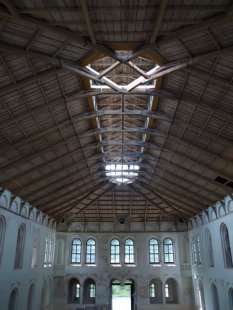

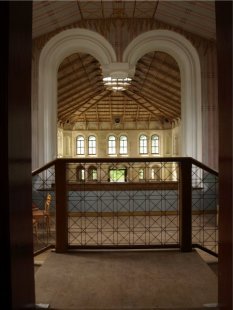
0 comments
add comment










